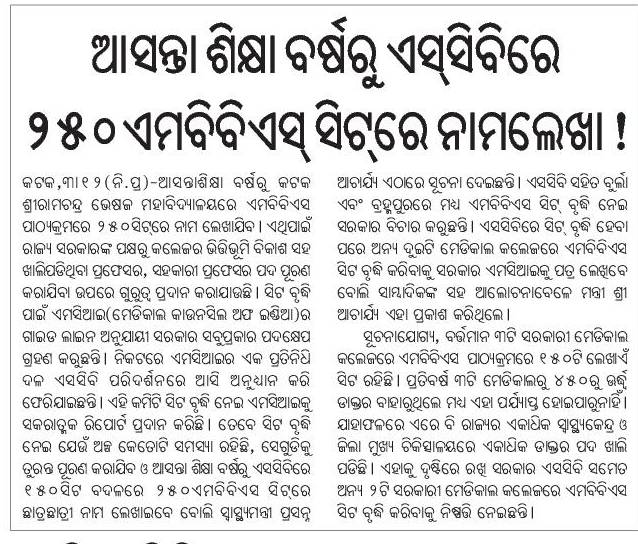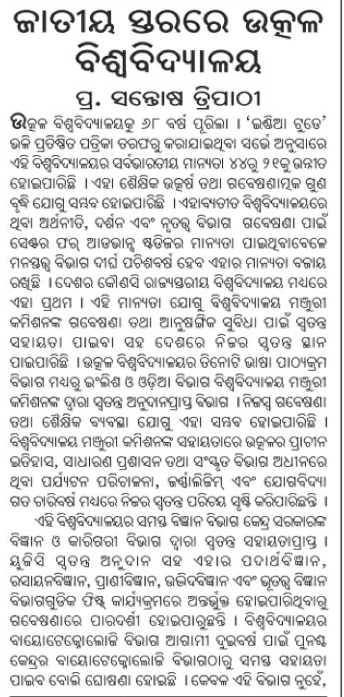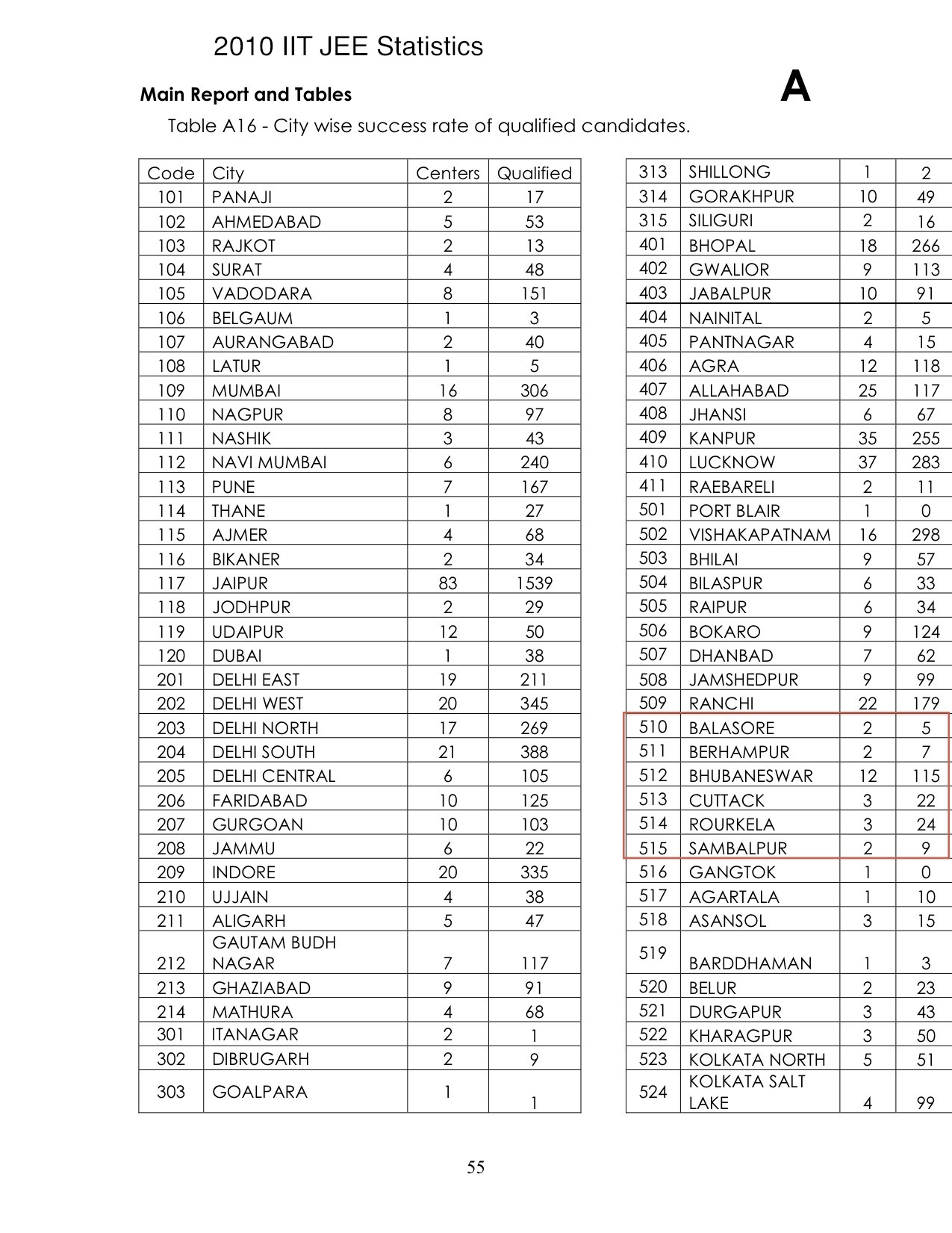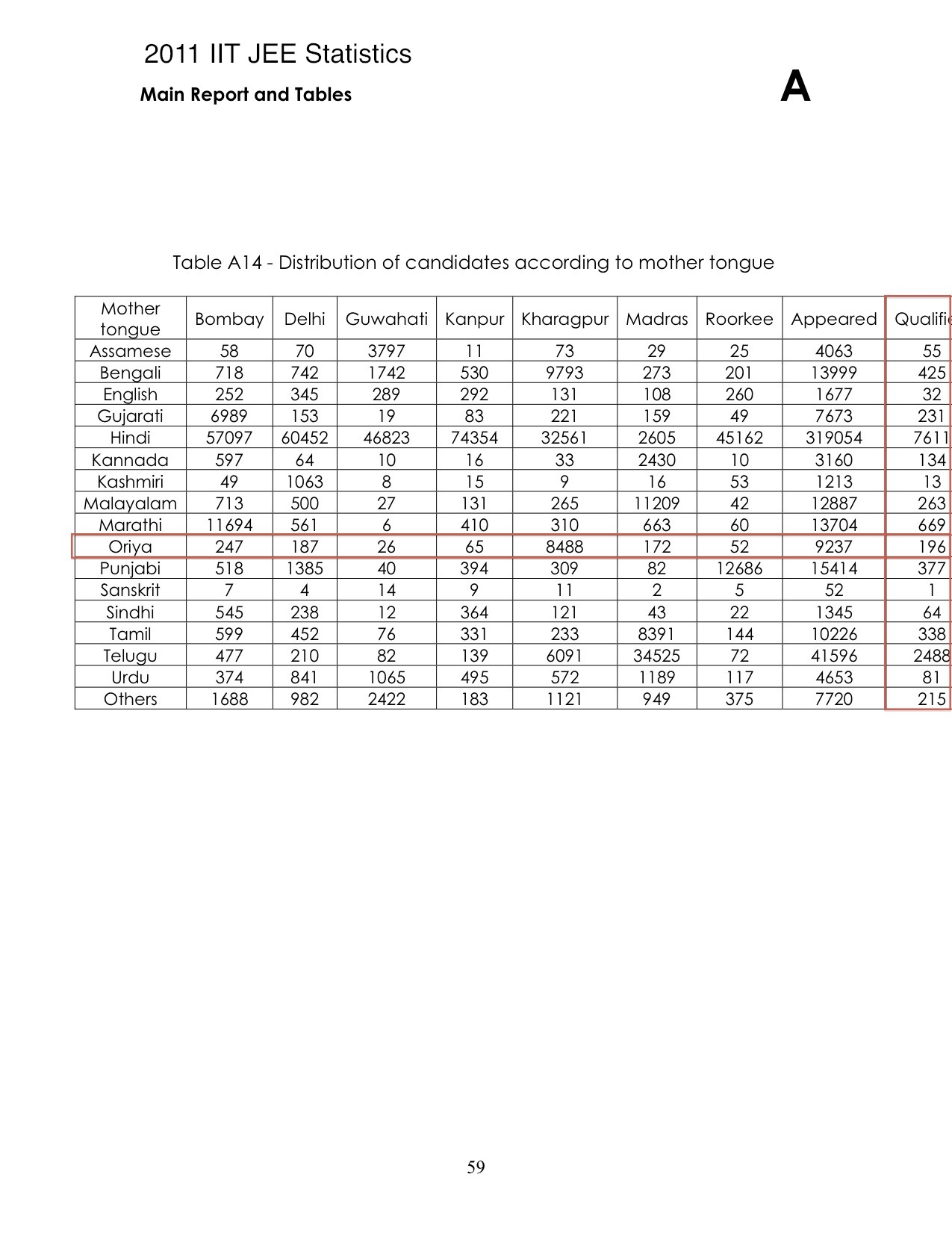Work in progress for SCB to have 250 MBBS seats from 2012-13

December 13th, 2011
Following is from Priya Abraham’s report in Telegraph.
Private institutes in the state have started approaching the Odisha University Agriculture of Technology (OUAT) for affiliation, following passing of the OUAT bill.
The bill was passed on August 23 amending the Orissa University of Agriculture and Technology Act, 1965, to enable the university to accord affiliation to institutions in the private sector for imparting education in agriculture, veterinary, fisheries, forestry and allied sciences.
While two private colleges in the capital have approached the authorities, a former professor of the varsity is said to be considering the idea of setting up an agricultural college, sources said.
… While students are keen to take admission in the constituent colleges of the OUAT, the existing intake capacity of the varsity is limited.
This year, the university had received about 12,000 applications for admission in 608 seats in various courses in the colleges of agriculture, agricultural engineering, fisheries, veterinary science and home science.
The university is also working towards the establishment of two constituent colleges. There will be a college of veterinary science in Sambalpur and a college in dairy technology in Baripada.
December 5th, 2011
4 comments December 2nd, 2011
Sri Sri University at Naraj, Cuttack is starting its business school (Faculty of Management) from 2012-13 with three MBA programs:
It has assembled a good list of faculty (23 core faculty, adjunct faculty, and visiting faculty) and academic and industry mentors. Many of them have degrees from and/or other associations with top institutions in India (IIT, IIM) and abroad (Cornell, UT Austin, etc.). The following youtube video gives a quick introduction of Sri Sri University’s Faculty of Management.
A photo presentation based on screenshots of the above video is linked below.
The campus design is impressive. See the youtube video of the Architect’s flyby below.
A photo presentation based on screenshots of the above video is linked below.
Note that the basic parameters of this university, as given in the above pictures, are as follows:
Note that many of the above numbers, especially the project cost, are comparable with that of IIT Bhubaneswar.
Based on the faculty it has already assembled for its business school, if they continue to hire at that level for the other disciplines, then, I think, at maturity (i.e., in 7 years) this university will be better than most central universities in India.
At that time with 10,000 students the tuition and housing income from students will be about 10,000 * 3 lakhs = Rs 300 crores per annum. (The 3 lakhs/year is based on the numbers here. The business school fees would have increased by that time. On the other hand other programs may have lesser tuition fees.) That is a good number to spend on the university.
November 30th, 2011
Following is from Samaja.
Following is from Sambada.
November 28th, 2011
Following is their ad.

The complete list of 11 colleges is available via http://www.imu.tn.nic.in/List%20imu%20institutes/list%20imu%20institutes.html. Following are screen copies.


 Note that the Indian Maritime University now has a new campus in Kandla, Gujarat. The initial campuses were in Chennai, Mumbai, Kolkata, Visakhapatnam and Kochi. The Odisha government should push for a campus in Odisha; perhaps by taking over or in adjacent to the existing Orissa maritime academy in Paradeep.
Note that the Indian Maritime University now has a new campus in Kandla, Gujarat. The initial campuses were in Chennai, Mumbai, Kolkata, Visakhapatnam and Kochi. The Odisha government should push for a campus in Odisha; perhaps by taking over or in adjacent to the existing Orissa maritime academy in Paradeep.
1 comment November 27th, 2011


Following are some of the highlights mentioned in the above article.
November 27th, 2011
(Thanks to Abi for the pointer.) The following tables are from documents at http://www.iitsystem.ac.in/academics/admmission.jsp.




November 22nd, 2011
(Thanks to Abi for the pointer.) The following tables are from documents at http://www.iitsystem.ac.in/academics/admmission.jsp..jpg)







November 22nd, 2011
Following is the ad.

It seems, besides PGDM, BIMTECH Bhubaneswar will be offering programs such as PGD in Mass Communication & Journalism, PGD in Communication Design and PGD in Industrial Design; all subject to AICTE approval.
1 comment November 20th, 2011


The 30.5 lakh sq feet is equivalent to 2,83,355.4066 sq meters and is equivalent to 70.0158 acres. As a comparison:
November 20th, 2011
The newsletter is at http://www.iitbbs.ac.in/pdf/Newsletter_Rhythm_4-9-2011.pdf.Following are some excerpts from it.
Ground Breaking Ceremony
The foundation stone of the permanent campus of the Institute was laid on 12th February, 2009. On the eve of the 65th Independence Day, on 14th August 2011, Sri Naveen Patnaik, Hon’ble Chief Minister, Odisha formally launched the construction of the Phase-1 of the permanent campus of the Institute near Aragul (Jatni) in the presence of Director Professor M. Chakraborty, Deputy Director, Deans, Registrar, Faculty Members, Officers, members of the Staff and students of the Institute and other dignitaries including Hon’ble Member of Parliament Dr P. K. Patsani, and Hon’ble MLAs of Jatni and Khurda. This was preceded by a Bhumi Pujan Ceremony at the site by the Registrar. The Government of Odisha has allotted 936 acres of land for the purpose and 16 acres of private land is being acquired by the Government for making the land contiguous. The Master Plan of the Campus has been designed for 10,000 students, 1000 teachers, and 1100 non-teaching employees besides 1000 plus outsourced support staff including security personnel. The Institute has also a plan for a Research Park. However, the initial construction in the first phase (Phase-1) would cater to 2500 students, 250 faculty members and about 300 other employees. The total investment for the phase-1 has been estimated to be about 800 crores. The construction would cover 2, 21,000 m2 (63000 m2 for academic complex and 1, 58,000 m2 for residential complex) which would include Main Administrative Building, Lecture Hall and Class Room Complexes, Laboratory Complex, Four Academic Schools, Central Workshop and Students’ Activity Centre in the Academic Complex whereas the Residential Complex shall consist of 800 capacity single seater boys’ hostel, 200 capacity girls’ hostel, 80 numbers of Grade A quarters for faculty members and officers and 40 numbers of Grade C quarters for supporting staff, Shopping and Community Centre, Guest House, service centre etc. The Main Building shall be a structure of 6 storeys and that of the other Academic Schools shall be of 4-storey construction. The hostels as well as the residential quarters shall be of G + 7 storey constructions. The Institute plans to start operating from its permanent campus by 2013-14.
Prof. P C Pandey Joins IITBBS
A doctorate in Physics (Microwaves) from Allahabad University, he is credited with the initiation of the satellite borne microwave remote sensing of Ocean Atmosphere and Cryosphere research in India. Professor Pandey was the Founder Director of National Centre for Antarctic and Ocean Research, Goa from 1997 to 2005. He has spent a major part of his career at Space Application Centre (ISRO), Ahmedabad, and has worked for about five years at the NASA’s world famous Jet Propulsion Laboratory, USA. Professor Pandey has carried out extensive research in the areas of satellite oceanography, atmospheric science, climate change and polar science. He has published more than 100 papers in reputed national and international peer reviewed journals and also written and edited many books. He has guided eleven Ph.D. students. Professor Pandey is a Fellow of the Indian Academy of Sciences (Bangalore) The National Academy of Sciences (Allahabad), Indian Society of Remote Sensing, Indian Geophysical Union, Geological Society of India and a host other societies. Besides, Professor Pandey has been Member/Chairman of various Committees of Govt. of India from ISRO, DSTM CSIR and has led or participated as member of delegation to various international Forums, notably the International Polar Year (2007- 09). He was also a member of the delegation led by Hon’ble Kapil Sibal to Antarctic, the first ever ministerial delegation to visit Antarctica. Professor Pandey has represented India in various International symposia related to Polar Science and Logistics such as Scientific Committee on Antarctic Research (SCAR), Antarctic Treaty Consultative Meeting (ATCM) etc. Professor Pandey is the recipient of the prestigious Shanti Swarup Bhatnagar Award (1989), Professor Vikram Sarabhai Award and Gold Medal, Om Prakash Bhasin Award and Vigyan Ratna Samman Award of U.P. Council of Science and Technology as well as the NASA award.
New Faculty Members joined
Dr. Arun Ghosh joined the School of Electrical Sciences in the month of April 2011. His research areas include Robust Control, Periodic feedback Control.
Dr. Subhransu Ranjan Samantaray joined the School of Electrical Sciences in the month of April, 2011. His research areas include Intelligent protection to transmission systems including FACTs, Microgrids with Distributed Generation and Dynamic security assessment in large power network.
Dr. Neti V. L. N. Murty joined the School of Electrical Sciences in the month of May 2011. His research areas include Semiconductor material & Device characterization, Wide Bandgap Semiconductor Devices, MMICs.
November 19th, 2011
Following is an excerpt from a report in Telegraph by Priya Abraham.
Utkal University is set to establish an engineering college in the capital.
… “The proposal to set up a new technical college has already been discussed by the syndicate and will be taken up by the academic council. The target is to start the new institute by the next academic session. A committee of experts will be set up to finalise the project,” Utkal University vice-chancellor P.K. Sahoo told The Telegraph.
“The team would discuss technical and academic aspects of the institute. Based on its recommendations, the institute will be set up,” said Sahoo.
The college will be located on the varsity campus and will have modern facilities and equipment. “We are trying to bring in diversification. For the staff salary, pension and modernising the varsity, there is a need for adequate funds. The UGC and state government have already asked state universities to try and raise their own funds. Only then can the varsity be self sustainable,” said the vice-chancellor.
Officials said a special budget would be sanctioned to make various provisions for the proposed institute.
However, this initiative by the university has surprised many people because technical education in the state is passing through a grim phase. About 22,000 of the 38,000-odd engineering seats are lying vacant. This number is around 5,000 more than last year.
… “There is definitely a lot of scope. Utkal University is a premier university and has earned a good name at the national level. Like all other self-financing courses that we have launched, this would also be a successful one,” said PG council chairman Pradip Kumar Sarkar.
Although there is a glut of engineering seats in Odisha with more than half the available seats unfulfilled, this is still a good move. This is along the lines of the recommendation by the Yashpal committee which recommended more well rounded universities. Having an engineering college as part of the university will make Utkal a more well-rounded university. In particular, being part of a university, the engineering program can take advantage of the existing university faculty in many disciplines (especially, English, Business, Economics, Psychology, Sciences, and Mathematics) and foster many cross disciplinary programs and research projects.
This action also shows that the new Utkal VC is a man of action and is willing to take risks. This bodes well for Utkal.
ps — We thank Prof. Arun Pujari, the immediate past VC of Sambalpur University, for having led the way in this direction by establishing SUIIT with several engineering programs and several other innovative programs. It is unfortunate that several locals and some activists could not understand his groundbreaking contributions and lobbied to deny him a second term. We hope that the new Sambalpur VC will continue the progress than Prof. Pujari made in Sambalpur.
November 19th, 2011
The website of this summit is http://www.ficci.com/past-Events-page.asp?evid=20665. Following are excerpts from the press release on Dr. Montek Ahluwalia’s speech.
Inaugurating FICCI Higher Education Summit 2011: Strategies for Expansion in Higher Education in India’, Mr. Ahluwalia said, “The challenge before planners, policy makers and educationists, both in the public and private sector, was of producing world class Indian universities that could be counted in the top 200 rating list.” In the next 20 years we must see a significant number of educational institutions in that category, he declared.
Mr. Ahulwalia also underlined the need to lend an international flavour to Indian universities by inducting international faculty. This would not happen unless the government removes the restriction on employment of international faculty, he said.
For higher education, the 12th Plan objective was expansion, equality of access and excellence. The aim was to raise the gross enrolment ration from the current level of 15 per cent to 30 per cent over the next 15 years. “Expansion of higher education has to be balanced with equality of access, especially for those living in areas where educational institutes did not exist,” he said.
Following are excerpts from the press release on Sam Pitroda’s speech.
Addressing the FICCI Higher Education Summit 2011, Mr. Pitroda said, “Higher education reforms are essential if the nation is to meet the serious challenge of skill shortage that will not allow the economy to grow at 8-10 per cent annually. While many of the recommendations of the National Knowledge Commission are in the process of being implemented, we are waiting for the government to act on the recommendations retailing to reform of higher education.”
“The debate on what needs to be done ought to be over, the time now is to focus on action,” he said and added that “the Bills have already been drafted but none of them have been tabled in or passed by Parliament.”
Mr. Pitroda’s concern found an echo in FICCI President, Mr. Harsh Mariwala’s suggestion that although education continues to be a priority sector during the Twelfth Plan, unless the reform agenda initiated by the Ministry of Human Resource Development in the 11th Plan is carried forward within a stringent timeframe, the demographic dividend of a young population could become a demographic disaster for India as well as the world.
Mr. Mariwala hoped that the Foreign Education Providers’ Bill; Unfair Practices Bill; Tribunal Bill and the Accreditation Bill will be passed in the coming winter session of the Parliament and the National Commission for Higher Education and Research (NCHER) Bill 2010 and Innovation University Bill will be introduced in the winter session of the Parliament. The delay in implementation of the reforms is a serious impediment for the economic development of the country, he said and added that FICCI earnestly urges the political leadership to take cognizance of this fact.
Mr. Pitroda said that the government was creating a US$ 5 billion National Knowledge Network (NKN) which is expected to be ready in about nine months. The network would be a state-of-the-art multi- gigabit pan-India network for providing a unified high speed network backbone for all knowledge related institutions in the country. It would facilitate the building of quality institutions with requisite research facilities and creating a pool of highly trained professionals. The NKN will enable scientists, researchers and students from different backgrounds and diverse geographies to work closely for advancing human development in critical and emerging areas.
Following are excerpts from a report in Chronicle of Higher Education.
Mr. Sibal has said that private participation in higher education must be encouraged, and conference attendees agreed that if the government hopes to reach its goal of sending 30 percent of young people to college, both private and public participation are needed. The challenge, as always, is in weeding out the low-quality operators.
"The public perception of private higher education is in a range," said Montek Singh Ahluwalia, head of India’s Planning Commission, a top government policy-making body. "Many are good, but there is a problem of those not-very-good ones."
Mr. Ahluwalia argued that supply and demand will eventually eliminate the bad actors, but others disagreed.
"It will be difficult to weed them out," said M. Anandakrishnan, head of the Indian Institute of Technology’s Kanpur branch. Because there is more demand than supply, he said, it will take time for stakeholders to make discerning choices.
Another delegate, Sachi Hatakenaka, a British-based education researcher, argued that "private sector growth is good for quantity but not for quality."
… Still, said Mr. Agarwal, the next round of government higher-education planning will focus more on expanding capacity at existing institutions rather than adding new universities.
Some private players were hopeful that the government will look to the private sector more as an ally than an adversary in coming years.
November 16th, 2011
| M | T | W | T | F | S | S |
|---|---|---|---|---|---|---|
| 1 | 2 | 3 | 4 | 5 | 6 | |
| 7 | 8 | 9 | 10 | 11 | 12 | 13 |
| 14 | 15 | 16 | 17 | 18 | 19 | 20 |
| 21 | 22 | 23 | 24 | 25 | 26 | 27 |
| 28 | 29 | 30 | ||||